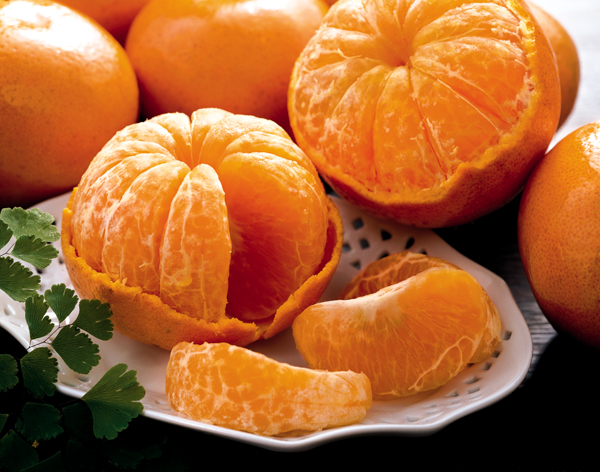Difference Between Orange and Tangerine

Popular citrus fruits that can be consumed as they are, or used in desserts, sauces, drinks, and even as garnishes, oranges and tangerines are frequently substituted with one another. While they belong to the same family, they are two separate fruits, and can be distinguished from each other on the basis of origin, taste, shape, and smell.
Known for being a popular pocket food, tangerines are small in size, while oranges tend to be larger. In addition to being smaller, tangerines are also easier to peel, and once peeled; the segments are easier to separate, as they pretty much fall apart themselves. Oranges, on the other hand, can be difficult to peel, and once peeled, difficult to segment. However, oranges generally contain less seeds than tangerines.
Aside from the appearance, the taste is also different. Tangerines are pretty much sweet all around with no sour hints, while oranges are more of a mixture of sweet and tart. This difference in taste also manifests itself in their acidic properties – oranges are far more acidic than tangerines, with a pH value of 2.4 – 3 (however, this could also be due to the fact that oranges are larger in terms of size).
In addition to the taste and appearance, oranges and tangerines both have different origins. The orange originated from South East Asia and grows on tall trees that can reach 30 feet in height. Meanwhile, the tangerine was cultivated in China and Japan for thousands of years, before travellers brought it to Europe in the late 19th century, and grows on trees that can reach up to 20 feet in height. This difference is apparent in their names – the word “orange” is of Dravidian and Tamil origins, while “tangerine” comes from the Moroccan region of Tangier (the seaport from which tangerines where first shipped to Europe).
Instructions
-
1
Orange
Belonging to the citrus species Citrus × sinensis, and the family Rutaceae, the orange is often thought to be a hybrid between the pomelo and mandarin, that has been cultivated since ancient times (as far back as 2500 BC in China). Oranges are the single most cultivated fruit tree in the entire world since 1987, and in addition to being eaten as they are, are also squeezed to produce a popular, vitamin C loaded breakfast staple – orange juice. Grown in tropical and subtropical climates, oranges are available in a large variety, and in addition to the fruit, the peel is also used in desserts, candies, and even as flavouring in teas. -
2
Tangerine
Characterised by a strong, sweet taste, and the ease with which they can be peeled and segmented, tangerines are thought to be a subspecies of the Citrus reticulata (or Mandarin orange). Commonly peeled and eaten by hand, tangerines are also used in desserts, salads, and even in main dishes. They are also frequently juiced, with either fresh or frozen juice concentrate being commonly available in the United States. These fruits come in a wide variety, among these the honey tangerine, and the sunburst tangerine.







